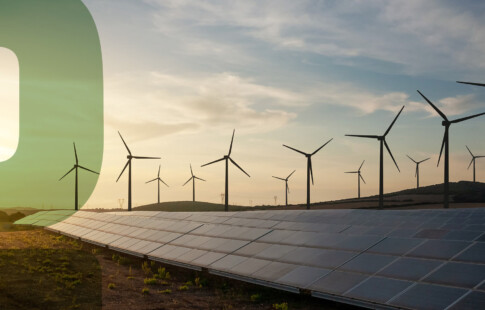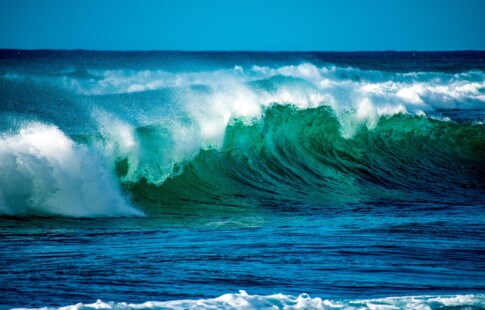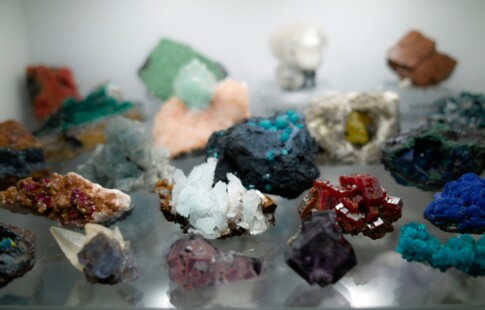
How Does Magnetic Power Generation Create Electricity?
We are reader-supported. When you buy through links on our site, we may earn affiliate commission.
Magnetic power generation uses the force of magnetism to convert kinetic energy into electricity. Are magnets themselves a form of renewable energy? No, but they do play an important part in generating electricity from renewable energy sources. This guide covers the science of magnetism and how magnets and turbines generate clean electricity.
Can Magnets Create Electricity?
The Law of Conservation of Energy shows that in any closed system, like a power generator, energy is always conserved, never created or destroyed. We get electricity through the conversion of other types of energy, like kinetic energy. This means any power generator has to have an initial source of energy, such as fossil fuels or motion.
Magnetism is a force, not a form of energy. As a result, it cannot provide energy by itself. Magnets are also not a renewable energy source, since they contain no energy themselves. A “magnetic power generator” theoretically powered solely by magnets is impossible according to the laws of physics.
However, magnets do play an important role in power generation. Most modern forms of electricity generation rely on magnets somewhere in the energy conversion process.
How to Use Magnets to Generate Electricity
Real-world magnet power generation uses magnets to convert kinetic energy into electricity, rather than creating electricity directly from magnetism. A basic electromagnetic power generator uses kinetic energy to move a magnet around near a wire coil. The magnetic force from the magnet moves the electrons in the wire coil, creating an electric current.
Kinetic energy is created by movement. For example, when you run on a treadmill, you are creating kinetic energy. The process of creating an electric current using a magnetic field is called electromagnetic induction. It can be found in almost every mainstream type of power generation, including some forms of renewable energy.
The Role of Magnets in Renewable Power
Magnetism is at the heart of modern power generation, especially in renewable energy. Different types of power generation use magnets differently, although not all electricity involves magnetism. For example, solar power does not rely on magnets to convert energy from the sun into electricity. However, a few other important forms of renewable energy do use magnets.
Wind Turbines
Wind turbines are a great example of how magnetic power generation works. Currents of wind move the large blades on the outside of the turbine. The movement of the blades generates kinetic energy. Inside the turbine, that kinetic energy turns a large magnet, which converts the kinetic energy into electricity.
Magnetism can be highly advantageous in windmill design. For example, some offshore wind turbines use large magnets to replace entire gearbox assemblies. This significantly reduces the number of moving parts that can potentially malfunction in the wind turbine. As a result, the turbines can be more resilient and reliable, which is particularly important for offshore wind power.
Wind turbines at sea can be difficult to maintain due to unsafe conditions on the water. So, if a turbine breaks down, it can go days or even weeks before a maintenance technician is able to repair it. By using magnets in place of gearbox assemblies, engineers can reduce the likelihood of long-term turbine malfunctions.
Hydroelectric Power
Another form of renewable energy, hydroelectric power, also relies on magnetic power generation to deliver clean electricity. A hydroelectric power plant converts kinetic energy from flowing water into electricity by putting a spinning turbine in the path of the water.
As the water flows by, it moves the turbine, which spins a magnet. The magnet converts the turbine’s kinetic energy into electricity through electromagnetic induction.
Hydroelectric power plants are often found in large rivers, where they are built into dams. People have been generating electricity from water since the late 19th century and it remains a reliable source of renewable energy. For instance, 67% of the electricity generated in the state of Washington was from hydroelectric power plants in 2022.
Geothermal Power
The U.S. is one of the highest producers of geothermal energy in the world as of 2022. Geothermal power uses energy from underground reservoirs of steam or hot water to create electricity.
First the hot water is pumped into a well under high pressure, turning the water into steam. The steam spins a turbine, which converts kinetic energy into electricity with the help of a magnet. Afterward, the steam is converted back into water and returned to the reservoir it came from.
Geothermal power may not be as common as wind or solar, but it can be helpful for filling in unexpected gaps in access to other forms of renewable energy. Geothermal power plants can operate almost 24/7 at maximum capacity. Wind and solar rely on local weather patterns, while geothermal power plants always have access to the reservoirs they are built over.
Why Isn’t Magnetism A Renewable Energy Source?
Magnets are a crucial part of creating renewable energy. So, why isn’t magnetism considered a renewable energy source? Magnetic power generation is not a form of renewable energy because magnets cannot create energy on their own. They utilize force from magnetism to move electrons, generating electric current.
In order for this to happen, though, the magnet needs some initial kinetic energy. A stationary magnet can’t create an electric current. Magnets are best thought of as a tool, not a source of power. They act as “translators” between kinetic energy and electricity.
Share on
Like what you read? Join other Environment.co readers!
Get the latest updates on our planet by subscribing to the Environment.co newsletter!
About the author

Steve Russell
Steve is the Managing Editor of Environment.co and regularly contributes articles related to wildlife, biodiversity, and recycling. His passions include wildlife photography and bird watching.





